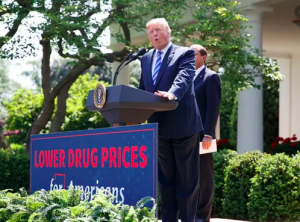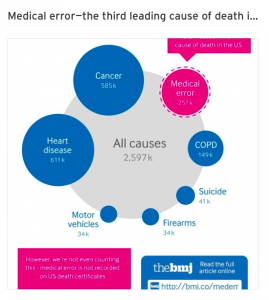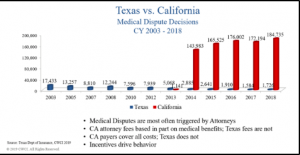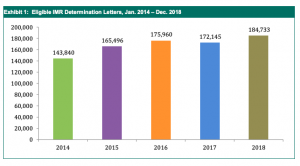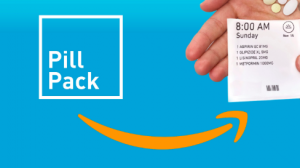In which I publicly fess up to miscalls and things I actually got right.
Each year I make predictions about what the work comp world will do in the coming dozen months. Here’s how that went in 2019… (spoiler alert..the ball was a bit cloudy last January…)

1. The work comp insurance market will harden – a little.
Nope. The seemingly endless soft market continues – and there’s nothing on the horizon to indicate it’s going to end.
2. A very big external event/issue/mess will affect the economy – and thus workers’ comp
Nope. Despite more launches by “Rocket Man”, a bunch of trade wars, tariffs that continue to crush agriculture, increasing catastrophes due to global warming, softening economies in Asia and Europe, and an impeachment, the economy continues on autopilot. Sure, one could argue that these and other crises would be a huge story in any other year, but the sheer size and number of daily crises has killed our ability to consider anything short of a collision with the moon as newsworthy.
3. There will be significantly fewer M&A deals in work comp services – and those deals will be either pretty small or really big
Yes.
The Sedgwick/York deal and the OneCall creditor takeover were the big ones. Not much else of size or significance happened…
4. Facility costs will be the new focus for payers and service companies
This is a push; it’s starting to happen – but not fast enough. Every other payer is fighting back, but far too many work comp insurers and TPAs aren’t paying attention.

5. New business models for Pharmacy Benefit Management will gain traction
Yes – transparent pricing is gaining traction, driven in part by the Ohio BWC/Optum litigation and what we’ve learned from it.
6. The “advocacy” claims model will gain a lot more traction,
Among the self-insured employers I’ve been talking with, the answer is yes. While different names are used, there’s definitely a push to get away from the “you’re a claimant” approach and move to a “how can we help”? ethos.
7. “Opt-Out” will not gain traction.
True that.
8. Service companies that deliver best-in-class customer service – and build that into their branding messaging – will win.
Yes. MedRisk has won the PT wars by delivering stellar service (btw the people in the office pictures on their site are real actual humans who work at MedRisk), PBM service leader myMatrixx is landing new customers (EMC, Koch, Qual-Lynx), HomeCare Connect is as well (Zenith Insurance, Great American, Broadspire, Chubb, State of North Carolina). (MedRisk and myMatrixx are HSA consulting clients)
9. More success in reducing long-term opioid usage by more payers.
Yes – but lots more progress is needed.
10. Payers will implement business models and processes using Artificial Intelligence
Yes – Ohio BWC’s work on using AI to code incoming work comp claims looks to be an impressive success. The Hartford is using AI to identify claims for intervention, and legal departments are using AI to scan documents for key words to support discovery and legal issues.
So, 7 right, 2 wrong, 1 a push. To be fair, the two I got wrong are big ones.
Coming up, predictions for 2020.

